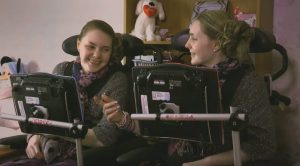For understanding genetic disorders, it is essential to make the concept of gene clear. Gene is a functional and physical unit of heredity. There are mainly two types of genes in the human body. People inherit that from parents. Do you know our genes comprise of DNA? Moreover, some of the genes are made to behave like instructions to make proteins. Protein is undoubtedly the most crucial aspect of a human body and works in most cells.
When a mutation or a change occurs in a gene or genes, it changes the gene’s instructions for making protein. So, somehow the protein could not work correctly; in some cases, there is not protein at all. This whole mess can cause a genetic disorder, which is a medical condition.
Typically the person will have the features of that condition. Further, a 50% chance that the person’s children will inherit the gene will eventually develop the same features. Sometimes from a few features, the whole situation can turn into severe disease.
Table of Contents
Types of genetic disorders
Here are the different types of genetic disorders that happen to people:
Single gene disorders
It is a medical condition that occurs when the mutation and its related problems affect one gene. For example, Sickle cell anemia, Cystic fibrosis, Marfan syndrome, Hemochromatosis, etc.
Complex disorders
Mutation can affect our genes. Sometimes the lifestyle and the environment play an essential role in this kind of condition. The complex situation is also called Multifactorial inheritance or polygenic inheritance. For example, Colon cancer, Breast cancer, Heart diseases, Arthritis, Diabetes, High blood pressure, etc.
Chromosomal disorders
A chromosome is that structure that holds human genes when chromosomes or parts of chromosomes are missing or changed. For example, Down syndrome, Turner syndrome, Klinefelter syndrome, etc.
Mitochondrial disorders
Mitochondria are organelles that are small in size and look round or rod-like in shape. They are found in the cytoplasm of animal or plant cells and involved in cellular respiration. When a mutation occurs in the non-nuclear DNA of mitochondria, the disorders caused by the change are called mitochondrial genetic inheritance or disorders. For example, Myoclonic epilepsy with ragged red fibers, etc.
Most Common Genetic Disorder
You may be able to find a genetic disorder in every nine people out of 10. Here we discussed the genetic disorders that happen among most people:
Down Syndrome
Generally, the nucleus of a person’s cell has 23 pairs of chromosomes. Down syndrome occurs when the 21st chromosome is copied an extra time in a few or all cells.
To detect chromosomal disorders, prenatal screening tests like blood tests are necessary. It helps to detect chromosomal abnormalities in a mother’s blood. The result of these tests can determine whether the child will or will not be born with Down syndrome.
If a person diagnoses with Down syndrome, they are most likely to experience different cognitive delay levels. Other Down syndrome results include congenital heart defects, wrong physical structure, low muscle tone, and an upward slant to the eyes.
It is seen that the more old the mother is, when she is about to give birth to a child, the more the child will have chances to have Down syndrome.

Cystic Fibrosis
Cyber Fibrosis is a chronic genetic inheritance disorder. Due to this disorder, a patient produces sticky and thick mucus; their digestive, respiratory, and reproductive systems are also affected. This condition’s inheriting rate is 25% if both of the parents have the Cystic Fibrosis gene.
It is seen that 95% of patients suffering from Cystic Fibrosis are sterile, and the median age of survival for cystic fibrosis patients is 33.4 years. But thanks to modern medication, the survival time can be extended. Mostly effective care strategies are recommended for Cystic Fibrosis patients.
Thalassemia
Thalassemia is a prevalent genetic condition that limits a person generally. It restrains oxygen flow throughout the body. The chances of children to inherit the Thalassemia gene from the parents are 25%. Most of the people who happen to have faulty genes diagnose with Thalassemia. Sometimes with any form of Thalassemia, severe anemia comes. In this situation, regular blood transfusions and other specialized care are crucial.
Sickle Cell Anemia
Sikalsel disorder can affect children if both of the parents pass it down. It’s a lifelong genetic condition. Due to this disease, the human body’s red blood cells can change into a sickle shape from their typical donut shape. As a result, the cells can clump together and can be caught into blood vessels. This situation can trigger severe pain and severe complexes like infections, acute respiratory syndrome, and organ damage.
Today’s modern medication can limit the mortality of this disorder. Primarily, a greater variety of vaccines are generally recommended as the starting point of the treatment.
Tay-Sachs disease
This genetic condition is usually carried by approximately one in every 27 Jewish people and about one of every 250 general population members. This medical condition is another chromosomal disorder like Down Syndrome. Among children, Tay-Sachs is exquisite. This disorder can eventually destroy the nervous system. It is seen that Tay-Sachs can even lead to death by the age of five.
Children or not the only victims of Tay-Sachs; adults can also be diagnosed with the disease. Adults can cause a manageable level of diminished cognitive ability. But Tay-Sachs is not entirely irresistible. Enzyme assay methods or DNA studies can help to accomplish Tay-Sachs.
Rare Genetic Disorder
The following genetic disorders are the rarest one, which means there is less than a 1% chance that your child can be affected. This rare nature of the diseases makes them more dangerous because they are mostly incurable.
Hutchinson-Gilford Progeria
Progeria is a rare genetic disorder, affects the world in every 8 million children. Due to this genetic mutation, rapid aging begins in early childhood. Large heads compared two to a patient’s body size, baldness, limited range of motion, and even hardening of the arteries; eventually, this increases the chances of heart attack or stroke. Cases of progeria are rarer in patients living into their 20s.
Fields Condition
This disease is a rarest genetic disorder. This is a progressive muscle disorder that restricts movement. This can cause painful muscle spasms, even up to 100 times every day. The disease is still partially a mystery to doctors. They cannot even name the disease, but they have been calling it a neuromuscular disorder.
Fields condition is named after two twins, Kristie and Catherine Fields. The illness paralyzed both sisters, resulting in destroying their ability to speak.

Kuru
Kuru is the rarest genetic disorder, generally only found in remote regions of New Guinea in the Fore tribe. It is a very rare genetic condition as well. A protein called prions is responsible for this disease. One of these disease results in abnormal brain tissue building that leads to progressive and incurable brain damage. This disease is deadly. It may sound insane, but one can acquire it by eating the brain of an infected victim! But the good news is, this disease is nearly non-existent today.
Microcephaly
These disorders can happen immediately at birth and even sometimes before the delivery. Due to this disease, the head becomes smaller than a normal baby’s head at birth. The disease happens due to exposure to hazardous substances when the baby is in the uterus. Generally, Microcephaly patients are mentally disabled and face dwarfism, hyperactivity, balance problems, seizures, speech and motor problems, etc. But in the end, Microcephaly is a sporadic disease.
Methemoglobinemia
People call Methemoglobinemia blue skin disorder. It happens when a patient has an abnormal amount of methemoglobin. This is a type of hemoglobin that can transform into carrying iron. Usually, people have 1 percent methemoglobin in their bloodstream. However, victims of these blue skin disorders possess between 10% and 20% methemoglobin.
This iron-caring hemoglobin carries a significantly lower amount of oxygen. Patients diagnosed with Methemoglobinemia possess a higher risk of heart abnormalities, seizure, or eventually die prematurely. A single-family in Kentucky reported about this rare disease. They passed this genetic disorder onto the family members for about 200 years.
Treatment for Genetic Disorders
Genetic disorders happen due to genetic mutations present in almost every cell in the body. This is why many systems and organs react differently. Some diseases do not have a cure as well.
A group of genetic disorder victims, affected by inborn errors of metabolism, disrupt their production of specific enzymes. So, the treatment mainly focuses on the dietary change or replacement of that particular enzyme. A proper and regular diet can help restrict the building of toxic substances produced by that enzyme.
In some cases, enzyme replacement therapy is the best option to fill the gap of the protein. Genetic disorder treatment tries to manage the signs and symptoms of the disorder to prevent further complications.
Doctors create treatment strategies to improve the signs or symptoms of several genetic disorders. Thus, the treatment depends on different conditions and the patient’s other health needs. For example, a doctor can prevent a deteriorating disorder or manage a heart surgery or transplant of the ailing heart.
Complex problems due to genetic disorders
Sickle cell disease, which is defective blood cell formation, can be treated through a bone marrow transplant. Some genetic disorders even can destroy a person’s future; for example, Breast cancer. These situations require immediate operation or removal of the cancerous cell tissues or the body part. This can help the patient survive.
Genetic disorders can give birth to several other problems that can eventually increase future risks. For example, particular diseases can cause miscarriage. There are many treatments available for this situation. Maybe the patient needs to stay in supportive care like a mechanical breathing assistant, etc.
The maximum genetic disorders cannot cure the root’s problem, which means the treatment cannot manage to alter the genetic mutation. But there are a few genetic disorders that can be treated by gene therapy. This technique makes changes in a person’s genes to get rid of the defects of the gene.
What is gene therapy?
Gene therapy is an effective treatment of gene disorders. Though until now, this is an experimental technique; in the future, doctors can insert a gene into a patient’s cells using gene therapy.
Genes inserted directly into body cells, may not function properly. You need a carrier or a vector to carry the new gene and introduce it to the body. Generally, particular viruses pose as vectors. There is nothing to worry about because the viruses don’t cause diseases. The viruses deliver the new gene successfully by infecting cells.
A few gene therapy methods can prove amazingly useful for genetic disorders; it includes:
- Switching off or inactivating a mutated gene that is functioning in properly and causing several problems
- Replacing a gene which is the root cause of a particular disease
- Inserting a new gene into the body which can help a patient to fight against diseases
Gene therapy is a fantastic invention of medical science, which can be very promising for genetic disorders like cancer, viral infections, skin diseases, and even saving lives. But the technique is still under certain risks, and further studies and improvements can to make it safe and effective.
Conclusion
Giving birth to a child with a genetic disorder can be very painful, even if it is incurable. But effective, consistent care by proper physicians can improve the health initially and help the patient fight. But the physician must be aware of the latest treatments of the genetic disorders along with the problems associated with it because new promising techniques of prevention and treatment of genetic diseases is essential.

